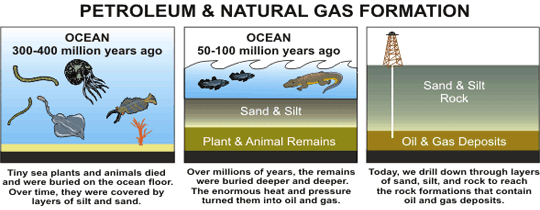Petroleum (Crude Oil): An Introduction
Petroleum, otherwise known as crude oil (and often referred to as oil), is the altered remains of marine micro-organisms, or plankton. Buried under millions of years of sediment, petroleum (crude oil) needs to be extracted from the earth through drilling.

Millions of years ago, micro-organisms died, settled to the sea floor, and were buried by sediment. As time passed, the thick piles of sediments buried the remains so deeply that they were subjected to high pressures and temperatures. The heat and pressure drove off oxygen and left behind petroleum (crude oil) consisting mostly of hydrogen and carbon, or hydrocarbon.

Petroleum (crude oil) forms in broad areas called source rock. In order for petroleum—once formed—to be useful, it must be accessible for drilling from oil wells. So, the petroleum (crude oil) has to migrate and become concentrated in a much smaller space called a reservoir. Oil companies drill into these areas to pump out the petroleum (crude oil).
Because petroleum (crude oil) is less dense than water and the ground is saturated with water, the petroleum (crude oil) and gas move up the slopes of deformed sedimentary layers to get caught under structural domes, adjacent to faults, or against impermeable rock layers in stratigraphic traps.
DID YOU KNOW? Petroleum (crude oil) does not come from dead dinosaurs, despite some perceptions, cartoons, and commercial ads.
